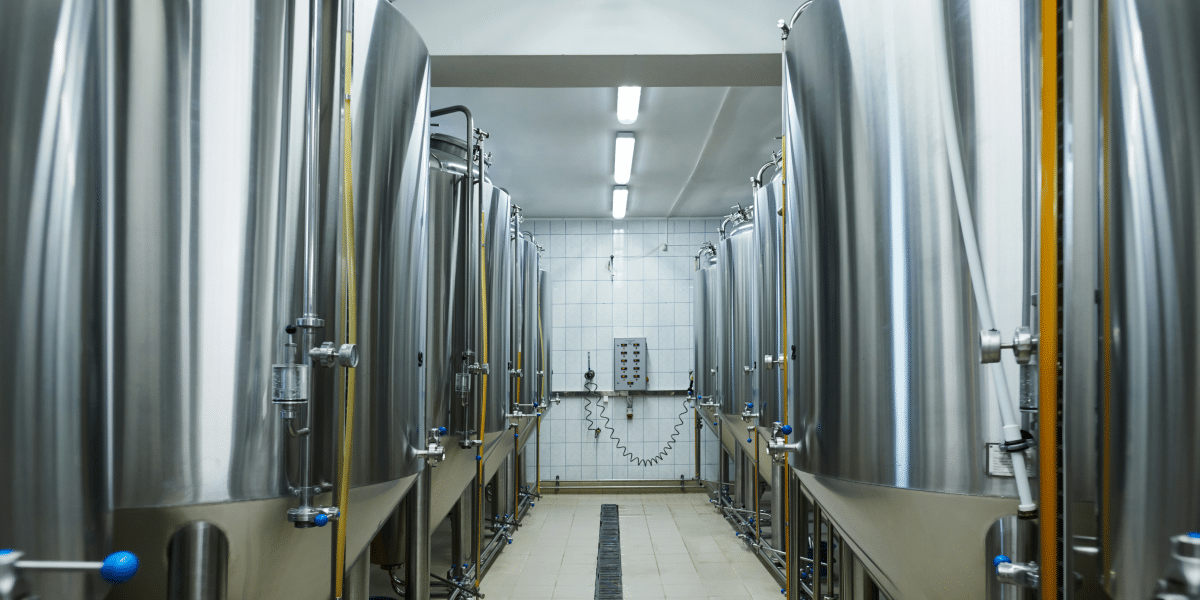Industries like food processing, biopharmaceuticals, beverage, dairy, and health and beauty product production must adhere to strict sanitary standards. Many modern innovations make cleaning more efficient while improving safety and productivity. These requirements are critical for consumer safety and regulatory compliance. Modern innovations make cleaning processes more efficient while enhancing worker and product safety.
The Importance of Sanitary Equipment Cleanability
Line cleanability is vital for product quality, safety, and regulatory compliance. There are two primary ways that processing equipment is cleaned. These are COP (clean-out-of-place) and CIP (clean-in-place). Their names are descriptive and explain in simple terms what they do. Clean out of place means equipment is broken down and cleaned while removed from the processing line. However, CIP is different because it maintains its location and does not require deconstructing or cleaning. Instead, cleaning solutions run through the processing equipment to remove remnants of processed material and sanitize the equipment.
Key Innovations in Sanitary Equipment Design for Enhanced Cleanability
Many advancements in sanitary equipment design have occurred over the last several years, resulting in innovations that allow smoother surfaces, low-angle corners, and improved cleanability.
- Automated welding—With precise manufacturing techniques, including automated welding, virtually seamless surfaces can now be produced. This is ideal for industries such as pharma that require this exact clean-room-grade equipment that is less prone to contamination.
- Quick replacement parts—Another innovation is equipment that can be quickly disassembled with access to parts to be replaced soon. This reduces production downtime and allows the processing line to replace required components rapidly.
- Non-stick and anti-microbial materials—These materials offer another layer of defense against contamination. In manufacturing industries, preventing sticky residues and contaminants on surfaces is a high concern. Non-stick surfaces make it harder for sticky residues to adhere to surfaces in a production line, making it easier to maintain hygienic standards and a less intensive cleaning process.
- Sensor and automation integration—This allows for continuous equipment monitoring to ensure cleaning is completed regularly when needed and routinely maintains cleanliness levels.
Improved Cleaning with CIP
CIP improves the thoroughness of industrial cleaning by automating the entire cleaning process throughout a processing line. A typical five-step CIP process includes a pre-rinse, wash, rinse, sanitizing, and a final rinse. The chemicals used in the wash are specifically formulated to effectively break down stubborn residues and biofilms that the pre-rinse might have missed. The rinses remove cleaning and sanitizing chemicals and further remove any lingering material. The sanitizing step ensures that all equipment surfaces on the processing line are pathogen-free before the next processing cycle begins. CIP technology provides a complete cleaning cycle and supports hygienic standards while reducing the time a standard COP (clean out of place) process would take.
Meeting Rigorous Hygiene Standards Across Industries
Hygienic standards set by the USDA and FDA require equipment to meet requirements for materials, surface finishes, and assembly methods. Smooth, non-porous, and corrosion-resistant finishes reduce the likelihood of contamination accumulating, are easier to clean and reduce the possibility of buildup.
The use of sensors to monitor systems is growing and has been incorporated into hygienic applications. Sensors capture real-time data on cleanliness and equipment status, highlighting compliance with sanitation protocols.
To maintain product integrity, the materials used are non-toxic, food-safe, and chemical-resistant. This guarantees that no harmful substances leach into processed food or pharmaceutical products, as regulations require.
Compact, Space-Saving Designs
Small and compact equipment designs maintain high standards for cleanability, ensuring that equipment meets all regulatory requirements. These designs often include tool-free assembly, making them quick and easy to take apart for cleaning when CIP is not an option. Self-draining is frequently added to eliminate product liquid pooling, improving hygiene. These design specifications align with their large system counterparts, ensuring that both large and small-scale equipment maintains stringent compliance with FDA, USA, and EU regulations.
Innovations of Hygienic Processing Systems
Innovations in sanitary processing equipment continue to stress the importance of strict hygienic standards. In industries like food processing, recalls are a concern, and product quality and regulatory compliance are major concerns.
Smooth, non-stick surfaces and antimicrobial materials help the cleaning process by making it more difficult for contaminants to adhere to this equipment. Modular and tool-free designs make breaking down equipment for cleaning easier. Clean-in-place technology provides a seamless monitored process that cleans, rinses, and sanitizes a system at the touch of a button.
Product integrity in the processing industries is paramount to brand and product image. Industrial cleaning and adherence to regulations in production facilities are essential.
Published by: Holy Minoza

















